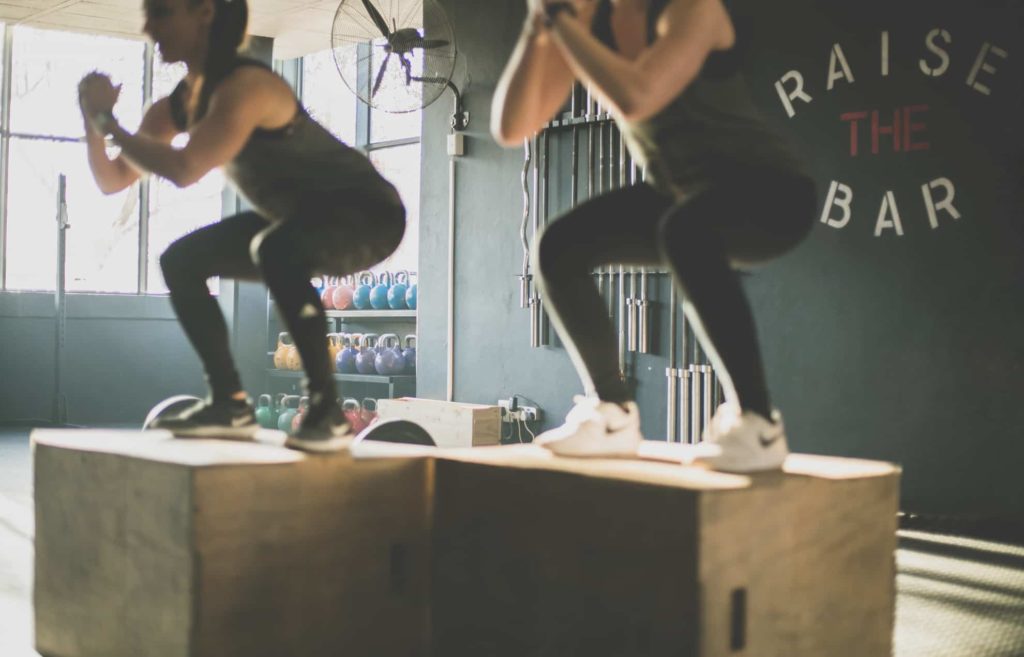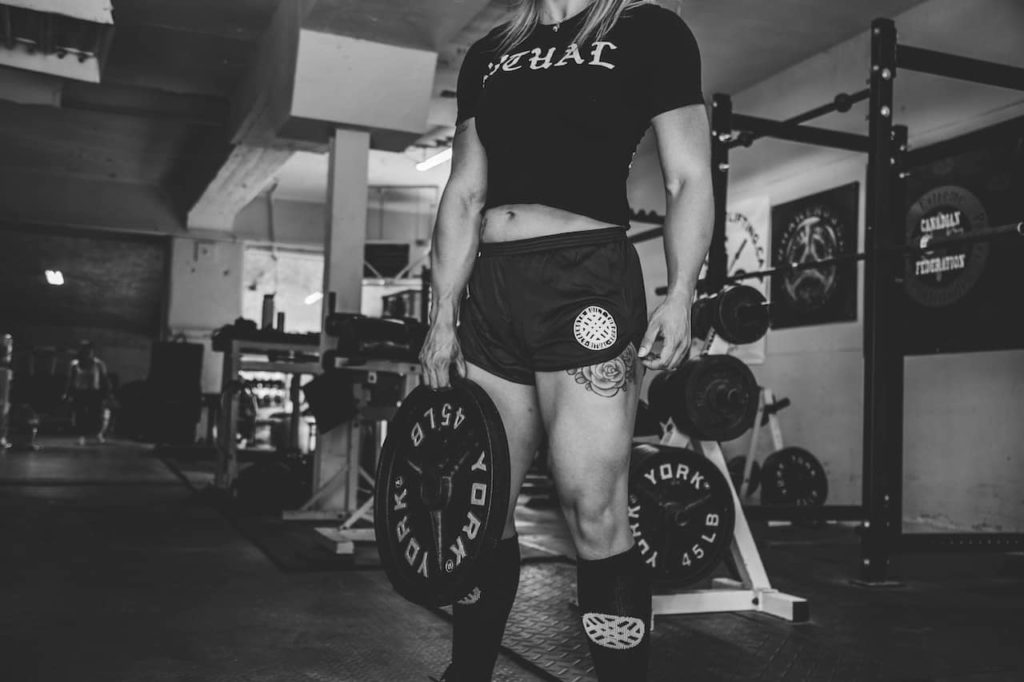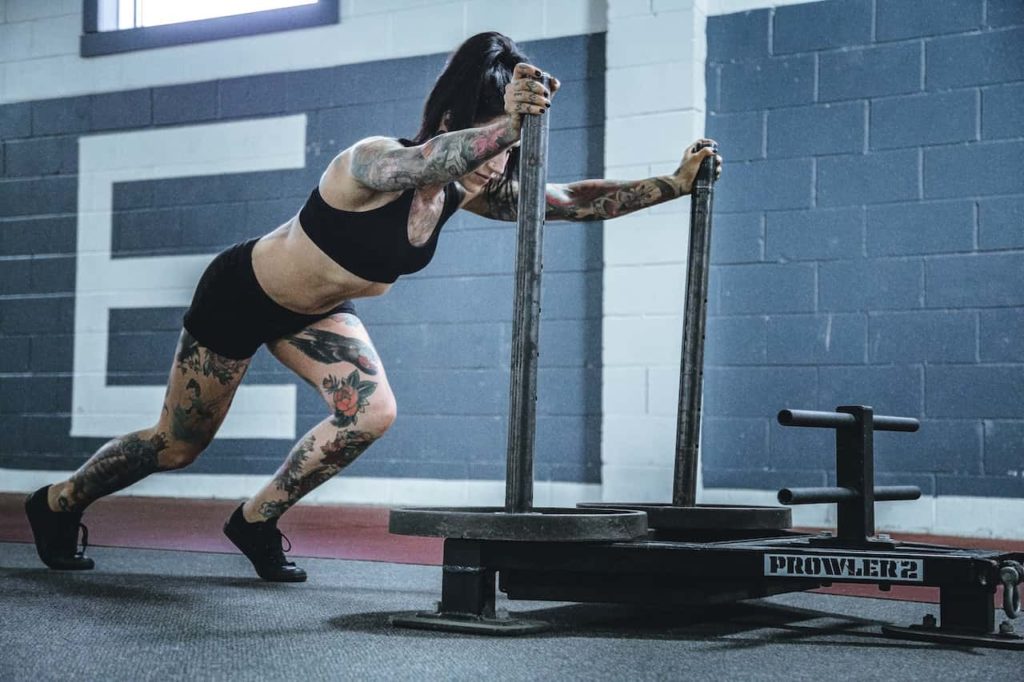17 de June de 2022
How to Increase Muscle Mass in Women
Weight training is something that is becoming very common among men and women of all ages. Today, looking better is the main cause for physical exercise for both men and women. However, this has not always been the case due to the imposition of the thought that a muscular woman was less feminine. Currently, the canons of beauty are changing and we see that a muscular woman is equally attractive and no less feminine for it. We are seeing more and more women in the weightlifting section of the gym, and honestly, it’s fantastic. The first goal of weightlifting is the increase in muscle mass. But do you think it is easy to gain muscle mass? How long does it take? And is it different between men and women?
In today’s blog post we are going to analyze what the literature says about increasing muscle mass and if it is the same in men as in women. But let me tell you one thing: “That if a woman trains strength and gains muscle mass does not mean that she is going to become the Hulk. I wish it was that easy.”
Principles for increasing muscle mass
We must bear in mind that there are 3 “sine qua non” conditions for the increase in muscle mass (1). I want you to tattoo them in your mind so that whenever you want to increase muscle mass you comply with all three. The first of them has to do with the exercise itself. You have to train strength. Every workout has to be a competition with yourself and you have to work hard. If we do not gain the muscle to work we will never increase our muscle mass.
On the other hand, you must have a good diet, and this means that you have to have a caloric surplus. Remember that a caloric surplus means that you have to consume more kcal than you spend. That is, eat everything you can, but always selecting good foods and do not abuse ultra-caloric or ultra-processed foods. On the other hand, it is very important that you meet the protein requirements necessary to increase muscle mass. If we don’t give them the basic nutrients that our muscles need to grow (protein) they will never grow and will even decrease(2).

Last but not least, is rest (3). One of the main reasons people don’t increase their muscle mass is because they don’t get enough rest. During this period the body can focus on recovering the parts of the body that have been damaged (in this case the muscles) and if you do not give them adequate rest you will never grow.
These are the foundations for the growth of muscle mass. As long as these bases are covered, muscle mass will increase. The “problem” is that sometimes we think we train well and we don’t, we think we eat well and we don’t, or we think we rest well and we don’t. In addition, depending on genetic conditions, your own sex or the lifestyle you have, muscle mass gains will occur faster or slower. Of course, if you use any illegal substance, your growth will be much faster and noticeable at the cost of poorer health. Once these principles are known, we are going to analyze muscle growth in women.
Reasons to increase your muscle mass if you are a woman
Next, we are going to give a series of reasons why it is interesting for women to increase their muscle mass:
- You will improve your performance: The increase in muscle mass will allow you to have more strength and therefore your performance will improve (4). A good way to gauge if your performance has increased is to measure the execution speed of core movements like the squat or deadlift that you can perform through the Vitruve device.
- Get in shape and “tone”: I am not very fond of the word toning since its true meaning is to increase muscle mass. But without a doubt, an increase in muscle mass will mean that you are getting in shape and of course that your muscles will be more “toned”, harder, and healthier.
- Improve your immune system: The increase in muscle mass causes not only an improvement in physical image but also allows your body to function better. The musculoskeletal system causes a series of reactions in the body that improve defenses against external organisms. Increasing your muscle mass means having a better immune system.
- Improve your posture and increase strength: As we have said, the increase in muscle mass is always accompanied by an increase in strength. The scientific literature has shown many times over that an increase in strength levels means an improvement in health. Therefore, you will improve your strength and, at the same time, your posture.
- Improves mental health and increases motivation: One of the most important parts of exercise is increasing adherence and maintaining motivation. The increase in muscle mass is one of the most motivating things there can be and of course, the benefit for mental health is undeniable (5).

For all these reasons, we recommend that, if you are a woman and you are doubting whether to increase your muscle mass or not, do not hesitate. Do it! They are all benefits and no harm. If you feel like you’re having a hard time, remember, find a motivation, go with a friend, lift heavy, rest well and think of all the benefits that are associated with an increase in muscle mass. There is no excuse!
How does the menstrual cycle affect muscle mass gains?
Fortunately, menstruation is no longer a taboo subject in our society. Recently in Spain they want to pass a law that allows women who have painful menstruations to telework on those days of the month. And it is that the menstrual cycle has been and is one of the biggest “complications” at the hormonal level of women. This process that has accompanied the human being throughout its history causes major hormonal changes and, without a doubt, affects both strength levels and muscle mass gains.

It is very important that both women athletes and those who are not, have good control over their menstrual cycle and know the phases and moments they have it. It is not unreasonable to think that there are times of the month when a person is more sensitive and others when she has more strength. It is pure human physiology. Well, it is important for all women to know their phases of the cycle and to know that there are times when they should lift heavier and other times when they should lower the load. All the processes that we have previously talked about. We are going to make a brief summary of the moments of the cycle in which you should do one type of training or another. At the time of ovulation there is an increase in estrogen that favors the increase in muscle mass. However, in the menstruation phase and after they drop, we recommend another type of training. We will summarize it in:
- Workouts focused on increasing muscle mass: Focus on the moments of ovulation
- Workouts focused on fat burning: Focus on the luteal phase.
- Lower intensity strength training: Focus on the menstruation phase.
Should we do cardiovascular training during an increase in muscle mass?
The relationship between cardiovascular training and increased muscle mass has been discussed for some time among fitness professionals (6). The theory says that in order to increase muscle mass we must have a caloric surplus. If we want a good caloric surplus, we must try to reduce the consumption of kcals by exercise, that is, reduce cardio. We know that if we do a lot of cardiovascular training, we increase the kcals we consume, as well as, for example, the number of daily steps. However, cardiovascular training may be necessary for certain people. For this reason, at Vitruve we do not want to recommend removing it. If you enjoy going for a run once or twice a week, don’t stop doing it. If you feel like getting into a spinning session, do not stop doing it. We know the magic recipe for increasing muscle mass, and we know that we must reduce our expenditure of kcal. However, we believe that it is more important that an athlete is happy and motivated with his training than that he follows the best training in the world for increasing muscle mass but does not enjoy it.

Conclusion
By way of conclusion, we will once again highlight the 3 basic principles for increasing muscle mass in women. Train hard, eat right and get plenty of rest. These are the foundations of increased muscle mass. However, women should know their menstrual cycle very well in order to adapt the training to each moment. Remember that if one day you are performing worse, it may be due to the phase of the cycle in which you are in. As always, remember that a very good way to control your training and your performance is through the execution speed that you can track through the Vitruve device. Velocity-based training gives us relevant data on the performance of that same day. Don’t hesitate to measure it. Lastly, the most important thing is to enjoy your training. Remember that perseverance prevails in all this and if you have fun in each of your workouts you will be able to be constant.
Unai Adrián Perez de Arrilucea Le Floc’h
References
1. Schoenfeld BJ. The mechanisms of muscle hypertrophy and their application to resistance training. The Journal of Strength & Conditioning Research. 2010;24(10):2857-72.
2. Morton RW, Murphy KT, McKellar SR, Schoenfeld BJ, Henselmans M, Helms E, et al. A systematic review, meta-analysis and meta-regression of the effect of protein supplementation on resistance training-induced gains in muscle mass and strength in healthy adults. British journal of sports medicine. 2018;52(6):376-84.
3. Auyeung TW, Kwok T, Leung J, Lee JSW, Ohlsson C, Vandenput L, et al. Sleep duration and disturbances were associated with testosterone level, muscle mass, and muscle strength—a cross-sectional study in 1274 older men. Journal of the American Medical Directors Association. 2015;16(7):630. e1-. e6.
4. Chilibeck PD, Calder AW, Sale DG, Webber CE. A comparison of strength and muscle mass increases during resistance training in young women. European journal of applied physiology and occupational physiology. 1997;77(1):170-5.
5. Gariballa S, Alessa A. Associations between low muscle mass, blood-borne nutritional status and mental health in older patients. BMC nutrition. 2020;6(1):1-7.
6. Wilson JM, Marin PJ, Rhea MR, Wilson SM, Loenneke JP, Anderson JC. Concurrent training: a meta-analysis examining interference of aerobic and resistance exercises. The Journal of Strength & Conditioning Research. 2012;26(8):2293-307.

